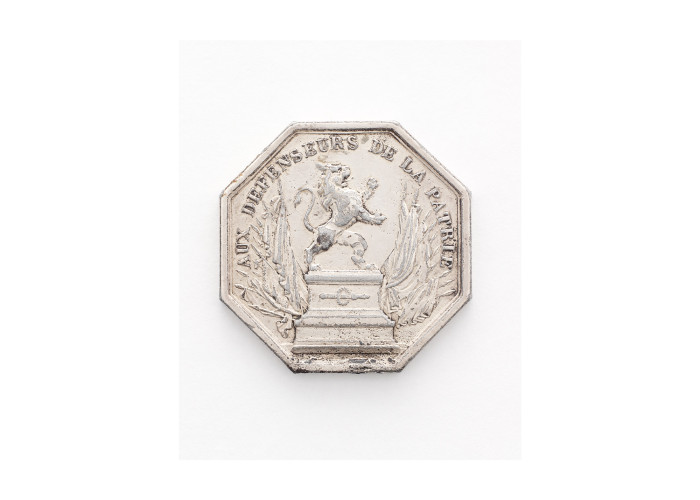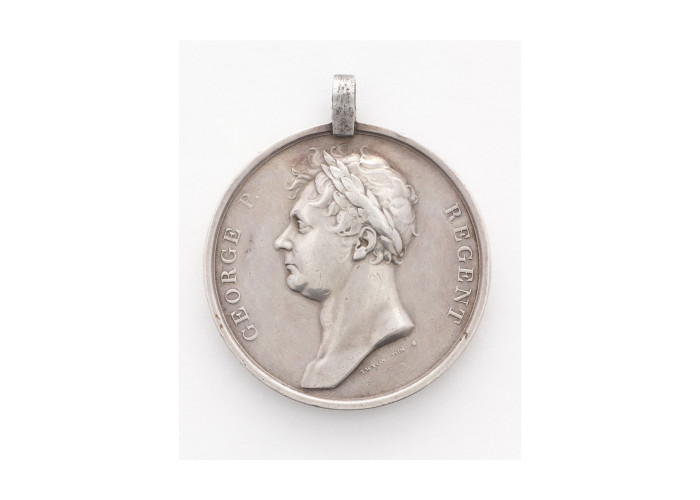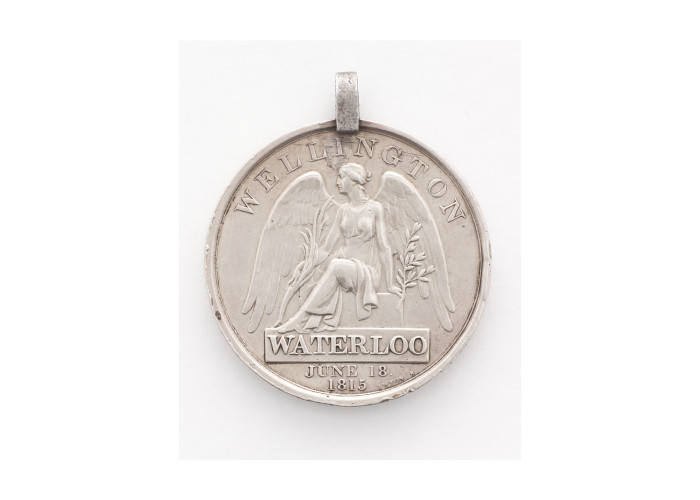Waterloo Medal & Belgian Liberation Medal
This is a pairing of two military medals, the Waterloo Medal from 1815 and the Croix de Fer (Iron Cross) awarded by the newly created Kingdom of Belgium in 1833. Very unusually, both these medals were won by the same soldier, who fought at Waterloo and in the Belgian War of Independence 15 years later.
The recipient of these two medals was a Hanoverian solider who served in the King’s German Legion, part of the British Army, and who fought at Waterloo. He was born Johann Heinrich Thiemann in 1785, although in the Waterloo medal roll and on the rim of the medal he is named Henry Thiman.
He served with the 4th Line Battalion in the 2nd British Infantry Brigade at Waterloo. His unit, which was positioned on the right of the Allied line, first came into action at about 4.00pm, during the French cavalry charges.
In the aftermath of Waterloo, Henry Thiman was stationed in Mons, where he met a Belgian girl whom he later married. He changed his name to Jean-Henri Thiemann and became a believer in a separate Belgian identity.
At the time of the Battle of Waterloo in 1815, Belgium did not exist as an independent country, but was part of the Dutch-dominated United Kingdom of the Netherlands. Since 1792, the territory of the Netherlands had been divided between many different conquerors. The Dutch and Belgians had in turn been dominated by Austria, then by France, then ruled by a brother of Napoleon, the unpopular King Louis I. Finally in 1815, the Congress of Vienna re-drew the map of Europe after Napoleon’s defeat at Waterloo, and united the northern Dutch and southern Belgians into a single state.
There were tensions between the north and south Netherlands from its creation in 1815. In 1830 the economic, political and religious grievances of the south turned into open violence. Anti-Dutch rioting broke out in Brussels in August 1830. The Dutch King William I sent an army to pacify the population but his own southern Dutch soldiers deserted and the army was withdrawn.
Fifteen years after Waterloo, Jean-Henri Thiemann joined the Belgian rebellion against Dutch rule. He was involved in fierce fighting, and received three bayonet wounds on 19 September during a struggle at the Porte de Nimy in Mons. For this service he received the Belgian Croix de Fer, possibly the only man to be awarded both this decoration and a Waterloo Medal.
A conference in London in December 1830, attended by representatives of the major European powers, recognised Belgian independence, with Leopold of Saxe-Coburg as the first king of the new state. The Dutch launched another invasion in 1831 but were defeated by a French army in the ‘Ten Days Campaign’. The Dutch finally recognised Belgium in 1839, whereupon the Treaty of London guaranteed Belgian independence and neutrality.
Thiemann died at Mons in 1845.
-
Curatorial info
- Production Date: 1833
- Material: Iron
- Creation Place: Brussels
-
Use this image
You can download and use the high resolution image under a Commercial Commons licence, for all non-commercial purposes, provided you attribute the copyright holder.
- Rights Holder: Copyright private collection
- License Type: Creative Commons
Private Collection
Some objects - such as this one - are owned by private collectors. Waterloo 200 cannot give information on the ownership or location of these items.













